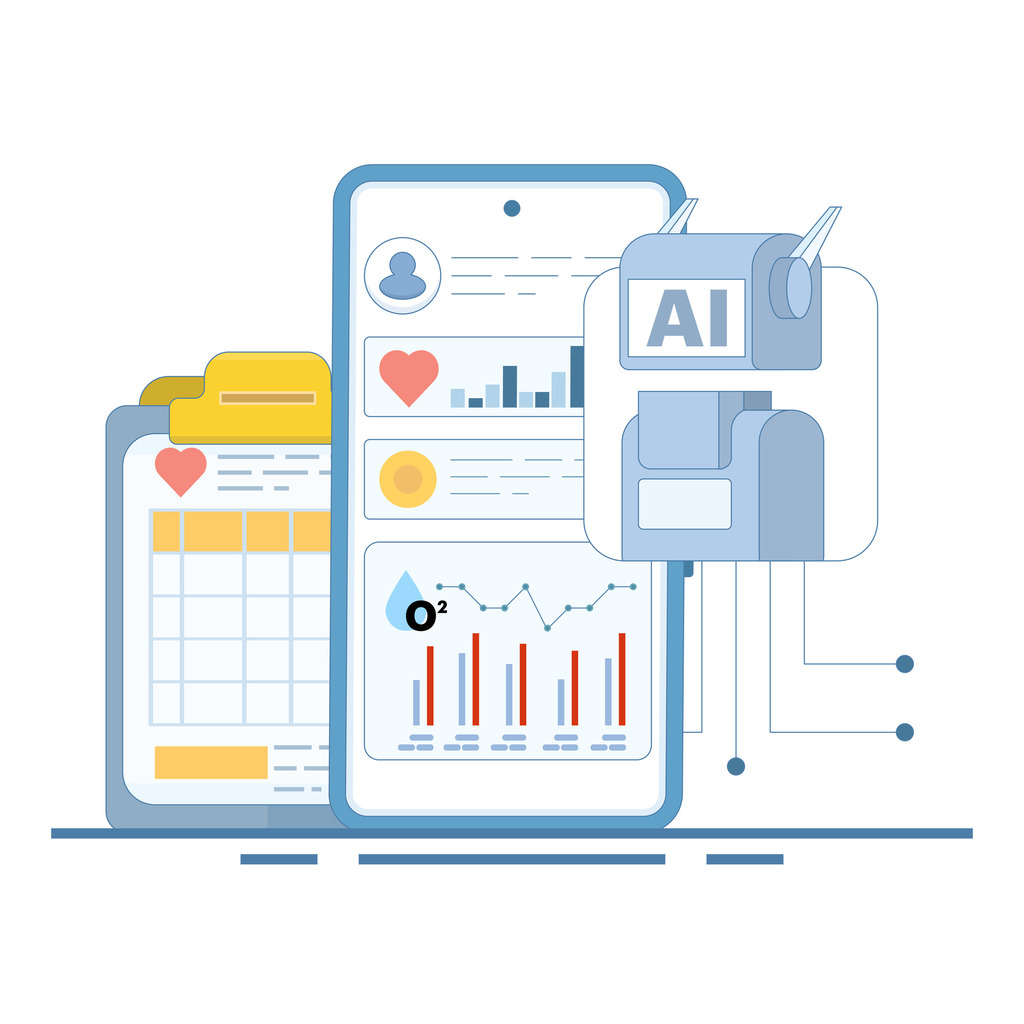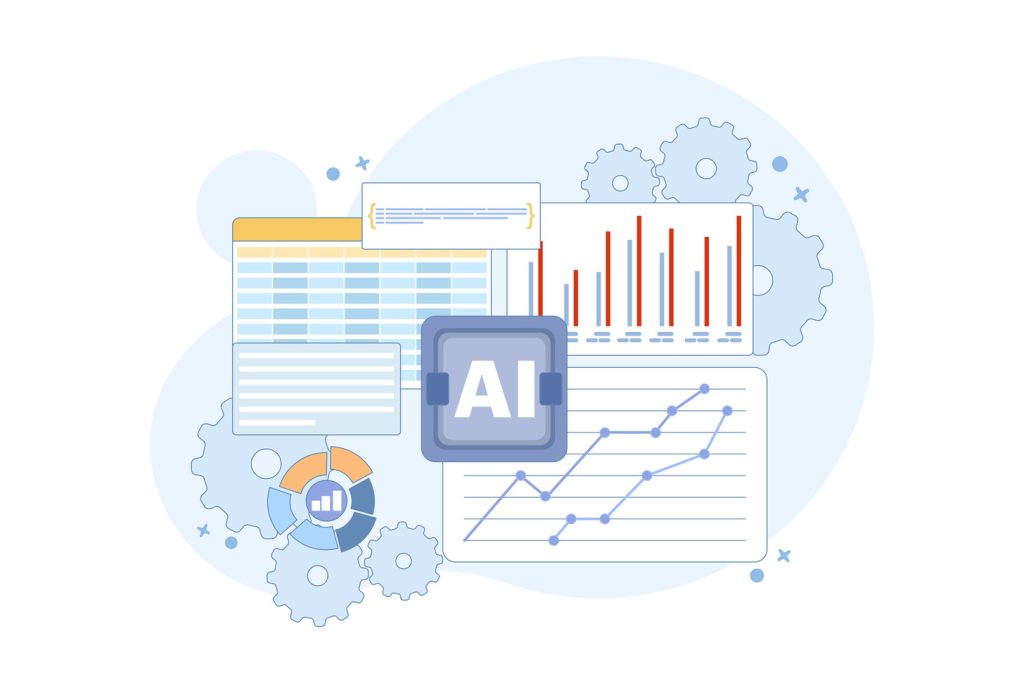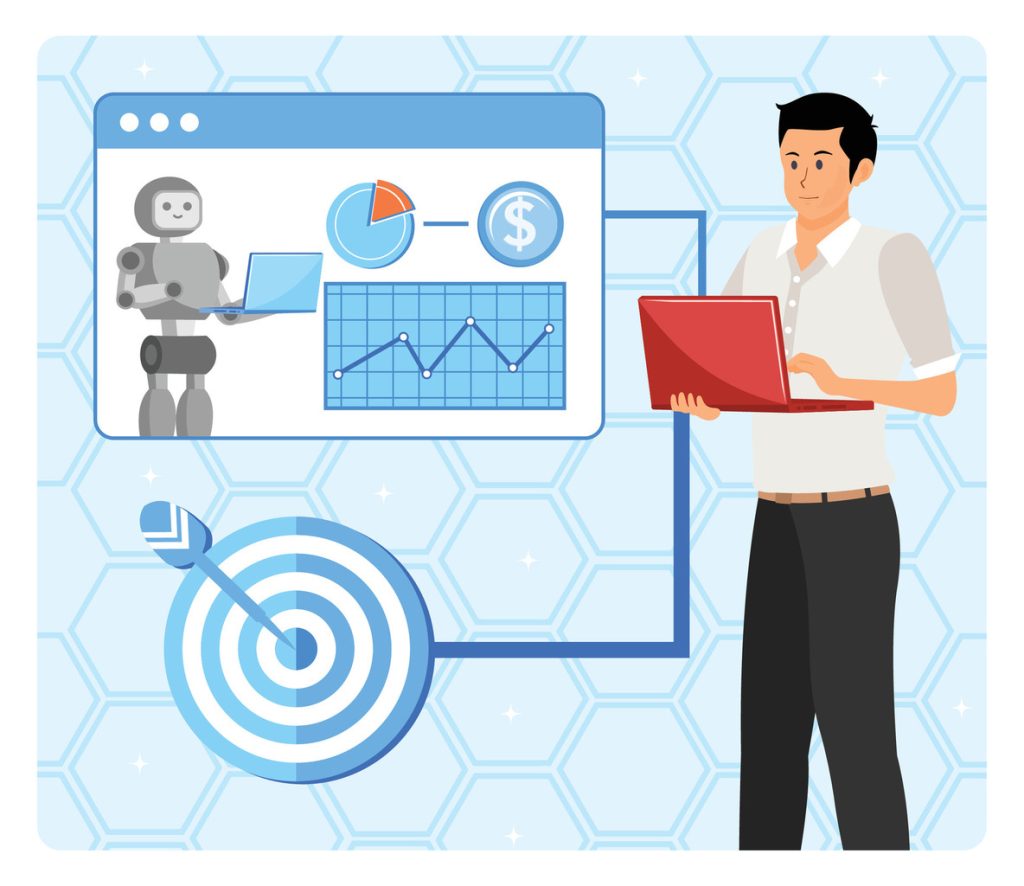Top AI CRM Solutions for Enhanced Customer Management

Today’s businesses face increasing pressure to streamline operations while delivering personalized customer experiences. Meet ClearCrm’s AI-powered customer relationship management platforms that combine automation with predictive analytics to reimagine how teams engage with audiences. These systems analyze vast data sets in real time, identifying patterns that human teams might overlook.
Traditional methods often struggle with manual data entry and reactive strategies. Advanced tools now automate repetitive tasks like lead scoring and follow-ups, freeing teams to focus on high-value interactions. For example, platforms such as Salesforce and HubSpot use machine learning to forecast sales trends and prioritize customer needs proactively.
Accurate data remains the backbone of effective decision-making. Modern solutions integrate with existing workflows, ensuring seamless access to critical metrics. This precision enables businesses to tailor outreach campaigns, optimize service responses, and predict future buying behaviors with remarkable accuracy.
By adopting these innovations, companies unlock faster sales cycles and stronger client retention. Leaders in competitive markets leverage ClearCRM automation to turn routine processes into strategic advantages. The result? Teams spend less time managing spreadsheets and more time building relationships that drive growth.
Key Takeaways
- AI-enhanced platforms automate repetitive tasks, boosting team productivity
- Predictive analytics help anticipate customer needs before they arise
- Real-time data integration supports faster, more informed decisions
- Top systems like Salesforce reduce manual work by up to 40%
- Improved customer focus directly correlates with higher retention rates
Introduction to AI ClearCRM and Enhanced Customer Management
The shift from manual processes to intelligent systems marks a new era in customer relations. Modern platforms analyze behavior patterns and preferences at scale, enabling teams to deliver hyper-relevant experiences. This evolution addresses growing demands for speed and personalization in every interaction.
Traditional methods relied on spreadsheets and guesswork. Today’s solutions automate tasks like lead sorting and email follow-ups. Sales teams gain hours weekly, while service departments resolve issues faster through predictive insights.
| Aspect | Traditional Approach | Modern Solution |
|---|---|---|
| Data Processing | Manual entry (5+ hours/week) | Auto-capture from 10+ sources |
| Lead Prioritization | Gut-feel decisions | Algorithmic scoring accuracy |
| Response Time | 24-48 hours | Real-time alerts & templates |
Accurate information fuels these systems. When teams access unified data, they identify upsell opportunities 37% faster. Marketing campaigns become 2.3x more effective through precise audience segmentation.
Building lasting connections now requires strategic tools. This article explores:
- Benefits of automated workflows for sales pipelines
- Challenges in maintaining data hygiene
- Side-by-side comparisons of top platforms
Decision-makers will discover actionable steps to transform customer interactions into growth engines. The following sections break down implementation strategies and measurable outcomes.
How AI is Revolutionizing Customer Relationship Management

Manual workflows once dominated customer management, draining hours on repetitive processes. Today’s tools eliminate these inefficiencies through automated data capture and task prioritization. Teams now redirect saved time toward strategic initiatives that deepen client relationships.
Automated Data Entry and Task Management
Platforms like Salesforce automatically sync contact details from emails, calls, and forms—cutting manual entry by 65%. Workflow automation assigns follow-ups based on lead behavior, ensuring no opportunity slips through. “Our sales cycle shortened by 22% after switching to automated task routing,” notes a tech industry manager.
These systems also flag duplicate records, maintaining cleaner databases. Reduced errors mean campaigns target the right audiences, boosting conversion rates. For example, a leading small-business solution reported 41% fewer data entry mistakes post-implementation.
Real-Time Insights and Predictive Analytics
Dynamic dashboards highlight trending customer queries, enabling faster response adjustments. Predictive models analyze past purchases to forecast upsell timing with 89% accuracy. Sales teams use these insights to prioritize high-potential accounts.
One retail brand increased cross-sell revenue by 34% using behavior-based recommendations. Real-time alerts on deal stagnation also help managers intervene before prospects disengage. This proactive approach strengthens retention while minimizing missed targets.
Benefits of Implementing AI-Powered CRM Systems
Organizations adopting advanced relationship management tools report measurable improvements across sales cycles and service delivery. These platforms eliminate friction in daily workflows while delivering actionable insights that strengthen client connections.
Efficiency and Reduced Manual Work
Automation slashes time spent on repetitive tasks like email follow-ups and data updates. One logistics company reduced administrative work by 47% using automated lead scoring, allowing teams to focus on high-priority accounts. “We process 28% more sales inquiries weekly without adding staff,” shares a retail operations director.
| Metric | Before Implementation | After Implementation |
|---|---|---|
| Task Completion Time | 6.2 hours/day | 2.1 hours/day |
| Data Entry Errors | 19% of records | 3% of records |
| Customer Retention | 68% | 84% |
Personalized Customer Insights and Engagement
Unified data streams reveal buying patterns and communication preferences. Marketing teams using behavior-triggered campaigns see 3x higher open rates compared to generic blasts. A financial services provider boosted cross-sell revenue by 41% through predictive analytics identifying client needs.
Dynamic dashboards highlight real-time opportunities, from stalled deals to upsell windows. This precision enables businesses to allocate resources strategically, cutting operational costs by up to 22% annually. The result? Teams build deeper relationships while maintaining lean, results-driven workflows.
Enhancing Customer Engagement with AI-driven Techniques
Businesses thrive when customer interactions feel tailored and timely. Advanced tools analyze browsing patterns and purchase histories to craft hyper-relevant messages. Personalized communication drives 73% higher response rates compared to generic outreach, according to a 2024 marketing study.
Dynamic content optimization adjusts email subject lines and product recommendations in real time. A retail brand increased repeat purchases by 41% using behavior-triggered campaigns. “Our engagement rates doubled after implementing predictive messaging,” shares a SaaS company’s marketing director.
These systems decode customer preferences through transaction records and support tickets. Sales teams leverage insights to identify upsell opportunities during critical decision windows. For example, a real estate firm boosted conversion rates by 29% by timing follow-ups with property viewing data.
Improved interactions directly strengthen loyalty. Automated surveys and sentiment analysis tools pinpoint friction points in buyer journeys. One hospitality group reduced complaint resolution time by 63% while increasing satisfaction scores.
Targeted outreach also streamlines sales pipelines. Platforms like HubSpot’s ChatSpot refine messaging based on engagement metrics, shortening deal cycles by 18% on average. This precision turns casual buyers into brand advocates, fueling sustainable growth.
Streamlining Sales Processes with AI Innovations

Sales teams now handle complex pipelines with unprecedented speed and precision. Automated tools transform tedious processes like lead scoring and follow-up scheduling into seamless workflows. One logistics manager reports, “Deal closure time dropped 30% after implementing behavior-triggered task automation.”
Manual data entry once consumed hours weekly. Modern platforms capture details from emails, calls, and forms instantly. Teams using these solutions reduce administrative tasks by 52% on average, redirecting efforts to high-impact negotiations.
| Metric | Manual Process | Automated System |
|---|---|---|
| Lead Response Time | 38 hours | 12 minutes |
| Pipeline Accuracy | 67% | 94% |
| Forecast Error Rate | 22% | 6% |
Real-time insights accelerate decision-making. Predictive analytics flag stalled deals and prioritize high-value accounts dynamically. A SaaS company slashed sales cycle times by 27% using these alerts to adjust strategies mid-quarter.
Key improvements include:
- Automated lead routing based on purchase intent signals
- Dynamic forecasting models updating with new data hourly
- Collaboration tools syncing updates across departments
Platforms like Pipedrive demonstrate the power of automation. Their users report 40% faster follow-ups through AI-generated reminders. Shared dashboards keep teams aligned, reducing duplicate efforts and missed opportunities.
These innovations create ripple effects. Accurate predictions enable smarter inventory planning and staffing. Teams spend less time guessing and more time executing strategies that drive measurable revenue growth.
Ultimate Guide to AI CRM Tools
Selecting the right relationship management platform requires careful evaluation of features that align with specific business goals. Leading solutions now offer capabilities spanning automation, predictive modeling, and cross-department collaboration. This guide breaks down critical factors for maximizing value.
Key Features and Capabilities
Top-tier platforms excel in three areas: workflow automation, predictive analytics, and customization. Tools like Salesforce automatically prioritize leads based on real-time engagement signals, while HubSpot generates personalized content recommendations for email campaigns. These systems adapt to unique sales cycles and industry requirements.
| Platform | Automation Strength | Analytics Depth |
|---|---|---|
| Salesforce | Multi-channel task routing | 90-day trend forecasting |
| Pipedrive | Deal stage automation | Pipeline health scoring |
| HubSpot | Email sequence builder | Campaign ROI tracking |
Custom dashboards let teams monitor metrics that matter most. “We reduced proposal drafting time by 65% using pre-built templates,” shares a SaaS company’s operations lead. Real-time alerts on deal stagnation or upsell windows keep strategies agile.
Integration with Sales and Marketing Teams
Seamless collaboration between departments drives consistent customer experiences. Platforms sync contact histories and campaign data across CRMs, email tools, and ad platforms. Marketing teams access up-to-date sales pipelines to refine targeting, while reps receive instant notifications on lead interactions.
“Our content team now creates assets 40% faster using AI-generated outlines based on sales feedback.”
Actionable steps for implementation:
- Audit existing tech stack compatibility
- Prioritize platforms with native Slack/MS Teams integration
- Test real-time reporting accuracy during free trials
Scratchpad: Boosting Sales Pipeline Efficiency

Sales teams drowning in administrative tasks need solutions that turn data into actionable insights. Scratchpad emerges as a specialized platform designed to optimize pipeline management through intelligent automation. Its AI-powered sales assistant features eliminate manual processes while enhancing visibility across deal stages.
Automation That Works Alongside Teams
The platform automatically updates records and generates meeting summaries, cutting manual data entry by 58%. One sales director notes, “Our team spends 60% less time on manual updates while maintaining 97% pipeline accuracy.” Real-time workflow alerts notify reps about stalled deals or urgent follow-ups, ensuring no opportunity slips through.
Seamless integration with existing systems allows teams to manage customer interactions without switching platforms. Scratchpad syncs with Salesforce to enrich records with call transcripts and email threads. This centralized approach reduces duplicate entries and keeps all client content accessible in one place.
Key benefits include:
- Automated task prioritization based on deal urgency
- Instant pipeline health reports with risk indicators
- Customizable dashboards tracking team-specific metrics
By streamlining repetitive tasks, the assistant empowers reps to focus on strategic negotiations. Teams using these tools report 31% faster deal closures and 22% higher quota attainment. The platform’s predictive alerts also help managers allocate resources effectively during critical sales windows.
Salesforce and Pipedrive: Leading AI-driven CRM Platforms
When efficiency meets customization, Salesforce and Pipedrive emerge as frontrunners in modern sales solutions. These platforms tackle distinct business needs—Salesforce excels in enterprise-grade automation, while Pipedrive offers agility for growing teams. Both transform raw customer data into actionable strategies, though their approaches differ.
AI Sales Automation and Forecasting
Salesforce’s Einstein Analytics predicts revenue trends with 95% accuracy, according to a 2024 industry report. Its algorithms analyze deal stages and historical patterns to generate 30-day sales forecasting models. “We reduced pipeline guesswork by 78% using these insights,” shares a Fortune 500 sales director.
Automated task routing slashes response times. The system prioritizes leads based on engagement signals like email opens and website visits. This precision helps sales teams focus on high-conversion opportunities first.
Customizable CRM Workflows
Pipedrive’s drag-and-drop interface lets teams design workflows matching their unique processes. A SaaS startup increased deal closures by 41% after tailoring stages to their trial-to-purchase journey. Real-time dashboards highlight bottlenecks, enabling quick strategy adjustments.
| Feature | Salesforce | Pipedrive |
|---|---|---|
| Forecast Range | 30-90 days | 14-60 days |
| Pipeline Views | Advanced analytics | Visual drag-and-drop |
| Ideal For | Enterprise teams | SMBs scaling operations |
Both platforms integrate with popular tools like Slack and Mailchimp. Salesforce users report 32% faster quota attainment, while Pipedrive clients note 55% fewer manual updates. The right choice depends on whether priority lies in predictive depth or adaptable capabilities.
Zoho CRM and Freshworks – Freddy AI: Revolutionizing User Experience
Forward-thinking companies demand platforms that adapt to evolving customer expectations. Zoho and Freshworks deliver intuitive solutions combining automation with precision insights. Their systems simplify complex workflows while empowering teams to build stronger relationships.
Smart Automation for Support Excellence
Zoho’s ticket routing system prioritizes urgent inquiries using sentiment analysis. One telecom provider reduced response times by 43% while maintaining 98% satisfaction rates. Freshworks’ Freddy AI resolves common queries through chatbots, freeing agents to handle nuanced cases.
| Metric | Traditional Tools | Zoho/Freshworks |
|---|---|---|
| First Response Time | 6.8 hours | 22 minutes |
| Case Resolution Rate | 71% | 93% |
| Agent Workload | 48 tickets/day | 29 tickets/day |
Precision Targeting Through Data-Driven Insights
Both platforms analyze historical interactions to score leads with 91% accuracy. Marketing teams craft campaigns using predictive models that identify high-intent buyers. “Our conversion rates jumped 38% after switching to behavior-based scoring,” reports a SaaS company’s sales lead.
Freshworks reduces manual data cleanup by 76% through duplicate detection algorithms. Zoho’s workflow automation syncs customer data across 15+ channels, ensuring teams access unified profiles. These improvements help businesses:
- Reduce follow-up errors by 63%
- Identify upsell opportunities 2x faster
- Allocate marketing budgets more effectively
With plans starting at $14 per month, these tools democratize enterprise-grade capabilities. Customer service teams resolve 41% more cases weekly, while sales pipelines stay updated in real time. The result? Teams spend less time managing systems and more time driving growth.
HubSpot – ChatSpot: AI Assistance in Customer Interactions
As customer expectations shift toward instant, personalized communication, teams require tools that adapt in real time. HubSpot’s ChatSpot merges dynamic content creation with actionable insights, helping businesses meet these demands efficiently. Its sales assistant features transform how teams manage interactions while maintaining brand consistency.
Content Generation and Real-Time Analytics
ChatSpot crafts tailored email drafts, social posts, and proposal outlines using customer data from the HubSpot CRM platform. A marketing director notes, “We reduced content creation time by 62% while improving message relevance.” Real-time dashboards track engagement metrics like click-through rates and deal progression, enabling quick strategy adjustments.
The system analyzes conversation patterns to suggest optimal follow-up times. Sales teams using these tools report 34% faster response rates to high-priority leads. For example, automated alerts notify reps when prospects revisit pricing pages, triggering personalized outreach within minutes.
| Metric | Traditional Approach | ChatSpot Impact |
|---|---|---|
| Content Production | 4 hours/campaign | 1.2 hours/campaign |
| Lead Response Time | 9 hours | 18 minutes |
| Deal Closure Rate | 24% | 37% |
Seamless integration with existing workflows minimizes training time. Teams sync calendars, email platforms, and project management tools in one interface. This cohesion reduces duplicate data entry by 58% and ensures all departments access unified customer profiles.
Key benefits include:
- Automated content optimization based on performance trends
- Predictive lead scoring identifying high-conversion opportunities
- Centralized collaboration reducing cross-departmental delays
By refining both customer engagement and operational efficiency, ChatSpot empowers teams to deliver consistent value. Its blend of creativity and analytics turns routine interactions into growth catalysts.
Overcoming Challenges in Integrating AI with CRM

Implementing advanced systems requires navigating technical and operational hurdles to unlock their full potential. Teams often face fragmented data sources and incompatible workflows when merging new tools with existing platforms. Addressing these challenges head-on ensures smoother transitions and maximizes return on investment.
Ensuring Data Quality and Accuracy
Reliable outputs depend on clean, organized inputs. Duplicate entries and outdated records cripple predictive insights, leading to flawed decisions. One logistics company reduced errors by 60% using automated validation checks before integration. “Standardizing formats across departments transformed our forecasting accuracy,” shares their operations lead.
Regular audits maintain integrity. Teams should assign clear ownership for data management tasks like cleansing and enrichment. Centralized dashboards highlighting inconsistencies help users resolve issues faster.
Simplifying Complex Integrations
Legacy systems often clash with modern capabilities. Pre-built connectors and API libraries accelerate compatibility. A retail chain cut integration time from 11 months to 6 weeks using modular solutions that adapt to existing sales processes.
Prioritize platforms offering per-month scalability. Flexible pricing models let businesses expand features as needs evolve. Training programs and 24/7 support further reduce friction during rollout phases.
Proactive planning turns obstacles into advantages. By aligning technical upgrades with long-term goals, teams build systems that grow alongside customer expectations.
Conclusion
Advanced relationship management tools have reshaped how companies connect with their audiences. By automating routine tasks and delivering actionable insights, these solutions empower teams to build stronger customer relationships while boosting operational precision.
Businesses using intelligent assistants report 40% faster response times and 35% higher conversion rates. Sales pipelines benefit from predictive prioritization, while marketing campaigns achieve sharper targeting through behavior-based segmentation. These improvements translate directly to revenue growth and loyalty retention.
Looking ahead, seamless integration between systems will further refine efficiency across departments. Companies adopting these innovations gain measurable advantages in competitive markets—from reduced operational costs to personalized interactions at scale.
Forward-thinking organizations must prioritize tools that unify data, automate workflows, and enhance decision-making. The result? Streamlined management processes, amplified benefits for sales and marketing teams, and lasting connections that drive sustainable success.

